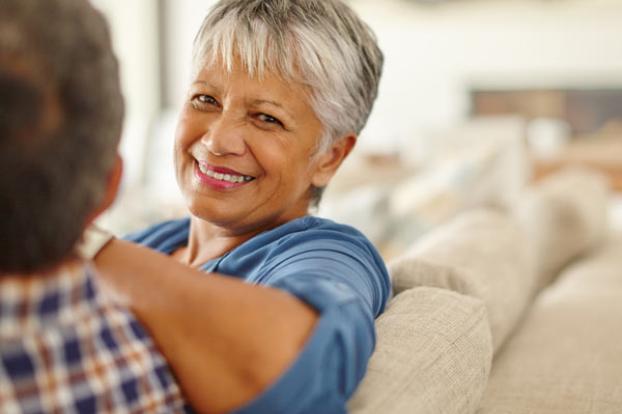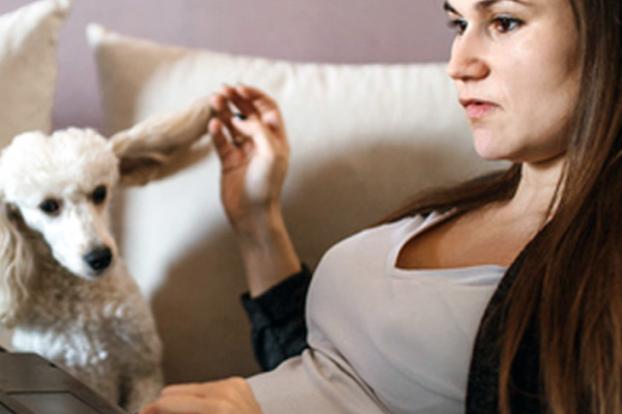Bladder Conditions & Incontinence
Are you concerned because your bladder leaks? Are you urinating more than 8 times per day, have an uncontrollable urge to use the bathroom or unable to empty your bladder?
Age, childbirth, injuries and other issues can take their toll on a woman’s body. Problems with your pelvic floor may be due to issues with weakened muscles or other conditions.
Your doctor will want to know as much as possible about your leaks, such as when it occurs, how much comes out, and what you’re doing when leaks happen.
Bladder problems can cause pain including interstitial cystitis (painful bladder) and urinary tract infection, or overactive bladder.
Take steps to stop bladder leaks
1. Talk to your doctor about unwanted leaks.
2. Learn why you are having this problem.
3. Get treatment and see results in 2 to 3 weeks.
Urinary incontinence is any time urine comes out when you don’t want it to, something that happens to many women.
Reasons
- Injury: Pelvic muscle damage from childbirth, infections, spinal injury or cancer.
- Medical conditions: Pregnancy, obesity or diabetes can lead to weakened pelvic muscles.
- Genetics: Frequently there is a family history of weakness and urinary incontinence.
Types
- Stress incontinence is when urine comes out during activities that put pressure or “stress” on your bladder. This can include lifting heavy items, coughing, exercising, laughing or sneezing. This happens due to weakened muscles and connective tissues that support the bladder.
- Urge incontinence is a sudden and strong need to urinate that doesn't always give you time to get to a bathroom. Urge incontinence is caused by abnormal bladder contractions. This is a common type of incontinence in people who are over age 60, and is often associated with a trigger such as hearing running water.
Treatments for Incontinence
Woman’s has a comprehensive team of experts, including gynecologists, urologists and physical therapists, committed to helping you gain control over your pelvic floor muscles.
Lifestyle changes
- Quit smoking: It makes you cough and is a main cause of bladder cancer.
- Limit caffeine and alcohol.
- Losing weight can help.
Therapy: Most women experience considerable results within 2 to 3 weeks.
- Pelvic floor exercises: Kegels are a simple way to strengthen your pelvic floor. You’ll tighten then relax your muscles, and repeat. This helps control your urine flow. Some people need assistance to Kegel. Electrical stimulation and biofeedback can help.
- Bladder training: Controlling when and how often you use the bathroom. When you go longer in between bathroom visits, your bladder will stretch and can hold more. Avoiding irritants will also help.
- Urgency suppression: A way to control the sudden feelings of needing to go. It’s another type of bladder training.
Surgery: If other methods for helping stress incontinence don’t work, your doctor might recommend surgery, which can include:
- Sling procedure. This is the most common. Your doctor will fashion a “hammock” using mesh and tissue to support your urethra. It can be done as outpatient surgery
- Retropubic colposuspension. Your doctor might choose this method, along with a combination of others, if your bladder has dropped or prolapsed.
Overactive bladder (OAB) is any combination of the following problems:
- Urinary urgency, an uncomfortably pressing need to get to the toilet.
- Urinary frequency or having to urinate more often than you should.
- Urge incontinence, when you leak urine along with feeling like you need to urinate due to unexpected bladder contraction
Causes
The bladder has two jobs:
- It should fill with urine until it is almost at capacity without leaking.
- When you sit on the toilet, the bladder muscle should squeeze itself empty of urine then relax to go back to filling up.
With OAB, the bladder has trouble keeping those two jobs separate.
Sometimes, it starts to squeeze before it is at capacity and before you are ready to empty it. This is what we call urge incontinence. Sometimes the bladder “wants” to start emptying before it is truly full, which is what happens with urinary frequency.
Treatments for OAB
- Lifestyle changes: Reducing your caffeine and alcohol intake as they can irritate the bladder and increase urination. Losing weight, taking precautions against urinary tract infections and preventing constipation by increasing fiber intake can be helpful.
- Bladder training by using techniques such as distraction to lengthen time between urination. Most women experience results within 2 to 3 weeks.
- Strengthening the pelvic floor muscles with pelvic floor physical therapy.
- Medications to control your symptoms. Sometimes, using medication in combination with lifestyle change and bladder training is helpful.
A urinary tract infection (UTI) typically occurs when bacteria gets into the bladder through the urethra, multiplies and develops into an infection in the urinary tract. UTIs are also called “bladder infections.”
Symptoms of a UTI can include painful urination, more frequent urination and/or a strong urge to urinate. If you see blood in your urine, call your health care provider right away.
Treating UTIs
Your doctor can prescribe antibiotics to treat UTIs. The type, dose and length of the antibiotic treatment depend on the type of bacteria causing the infection and your medical history.
Treatment is usually quick and most symptoms go away in one or two days. Be sure to take all the medication even if your symptoms go away before you finish the prescription.
Is it a UTI or something else?
UTI symptoms can overlap with other conditions such as common vaginal infections and sexually transmitted infections. You can usually tell the difference because a vaginal infection typically will also include a vaginal discharge, burning or itching. Talk to your doctor.
Preventing UTIs
- Wipe from front to back after a bowel movement and after urinating.
- Empty your bladder before and after sex.
- Avoid using douches, powder and deodorant sprays.
- Drink plenty of fluids to flush bacteria out of your urinary system.
- Empty your bladder at least every three hours.
- Take cranberry pills. This helps some women.
- Use probiotics.
- Talk to your doctor about prescribing vaginal estrogen cream to increase the number of friendly bacteria and decrease the number of infection-causing bacteria if you are postmenopausal.
- Control your blood sugars if you are diabetic.
Also known as painful bladder syndrome
Interstitial cystitis is a chronic condition causing bladder pressure, bladder pain and sometimes pelvic pain. This can range from mild discomfort to severe pain.
What is interstitial cystitis?
In people with interstitial cystitis, the signals that say your bladder is full and you need to urinate get mixed up. The result is that you feel the need to urinate more often and in smaller volumes.
Interstitial cystitis most often affects women and can have a long-lasting impact on quality of life. Although there's no cure, medications and other therapies may offer relief.
Signs & Symptoms
The signs and symptoms of interstitial cystitis vary from person to person and over time. Symptom-free periods and flare-ups can occur, usually triggered by menstruation, sitting for a long time, stress, exercise and sexual activity. Symptoms include:
- Pain in your pelvis or between the vagina and anus in women
- Chronic pelvic pain
- A persistent, urgent need to urinate
- Frequent urination, often of small amounts, throughout the day and night (up to 60 times a day)
- Pain or discomfort while the bladder fills and relief after urinating.
- Pain during sexual intercourse
Although signs and symptoms of interstitial cystitis may resemble those of a chronic urinary tract infection, there's usually no infection. Always check with your doctor.
Treatments
- Medication
- Lifestyle Changes
- Quit Smoking
- Avoid Bladder Irritants
- Therapy
- Relaxation Exercises
- Manual Therapy
- Bladder Retraining
Bowel dysfunction includes fecal incontinence, unexpected loss of gas/stool, constipation, irritable bowel disease and outlet dysfunction.
Common causes
- Injury from childbirth, surgery, infection, spinal cord or cancer
- Medications
- Pregnancy, GI disorders or neurological conditions
- Pelvic floor muscle dysfunction
- Dietary habits
Symptoms
- Constipation
- Difficulty having, not completely eliminating or pain with a bowel movement
- Bloating/abdominal distension
- Fecal leakage/loss of stool
- Involuntary loss of gas
- Urine leakage
- Bowel obstruction
- Food sensitivities
Treatment
Your treatment plan will depend upon your individual condition and could include:
- Physical Therapy
- Exercise and dietary prescription
- Biofeedback/electrical stimulation
- Education on symptom management
- Medication management
- Surgery
Additional Interests
-

Make a Plan for Relief
Talk to us about therapy, including manual therapy, exercise prescriptions, biofeedback/electrical stimulation, education on how to manage your symptoms and medication management.
-

Check the Chart
Don’t ignore your symptoms out of embarrassment. No one knows your body better than you. If you feel like something isn’t normal, pay attention. Make notes. And see your doctor.
-

Maybe Minimally Invasive
With smaller incisions and shorter recovery time, we can diagnose and treat a variety of conditions, including incontinence, kidney stones, ureteral blockages, and "fallen" bladder.
